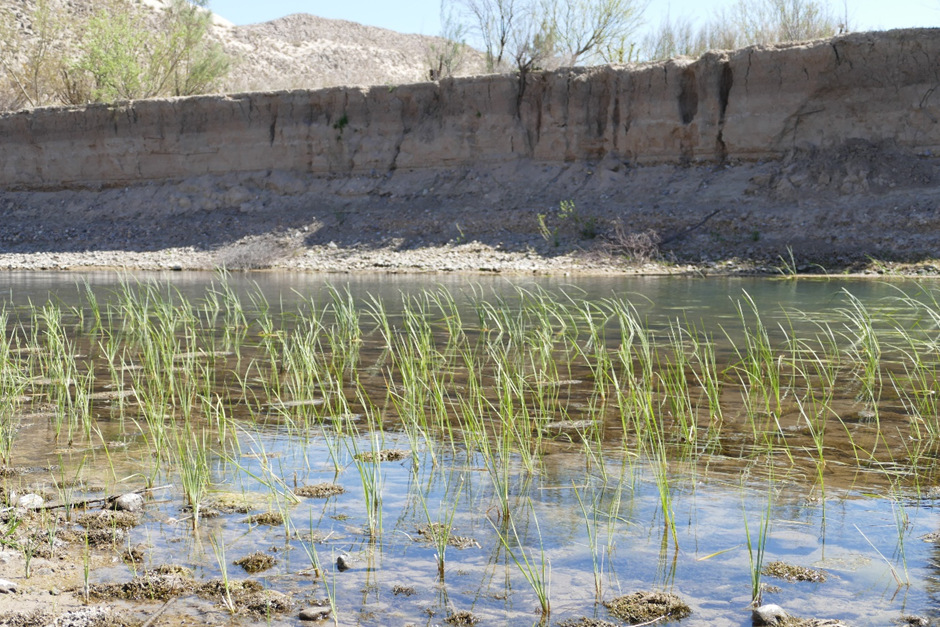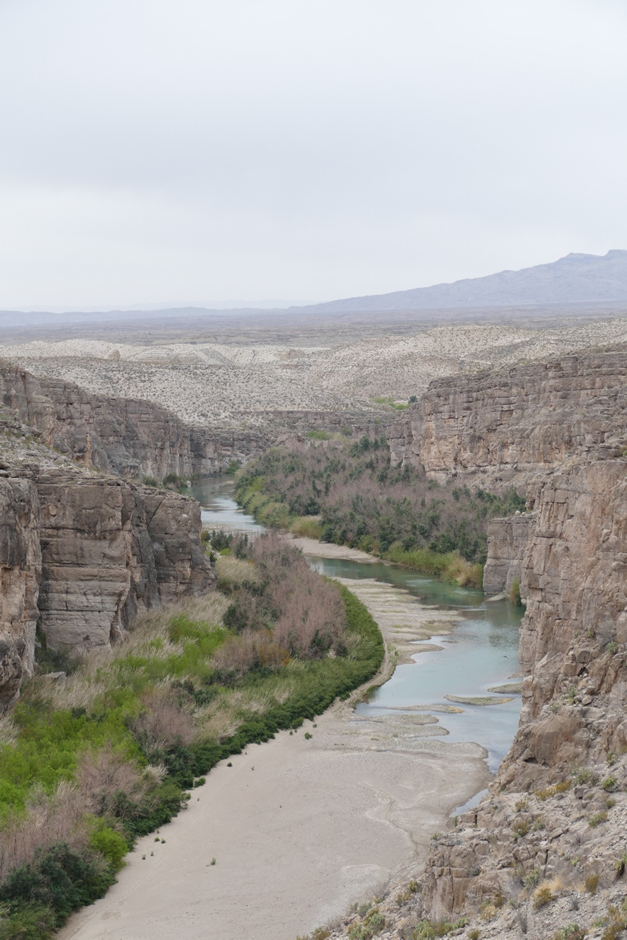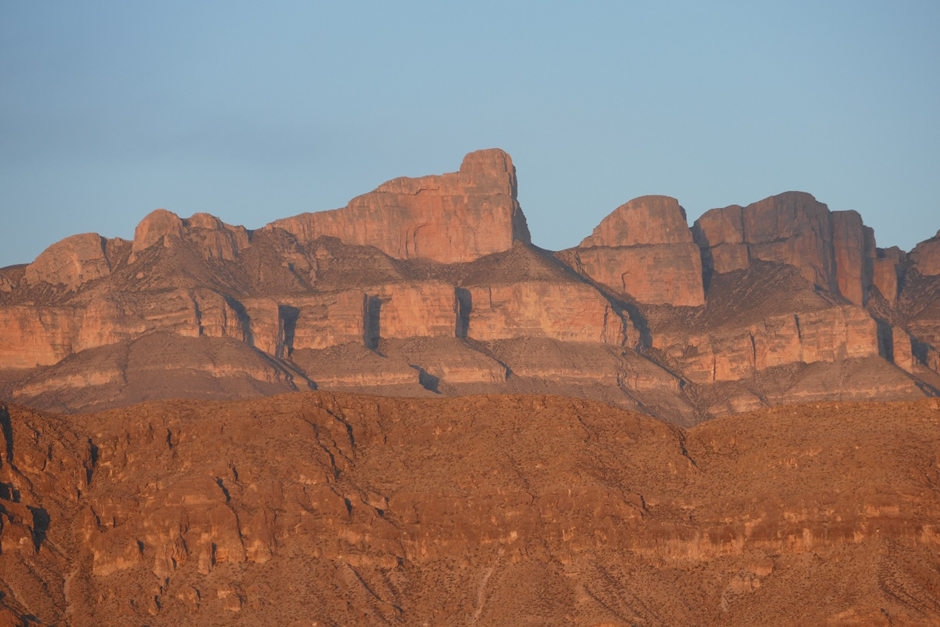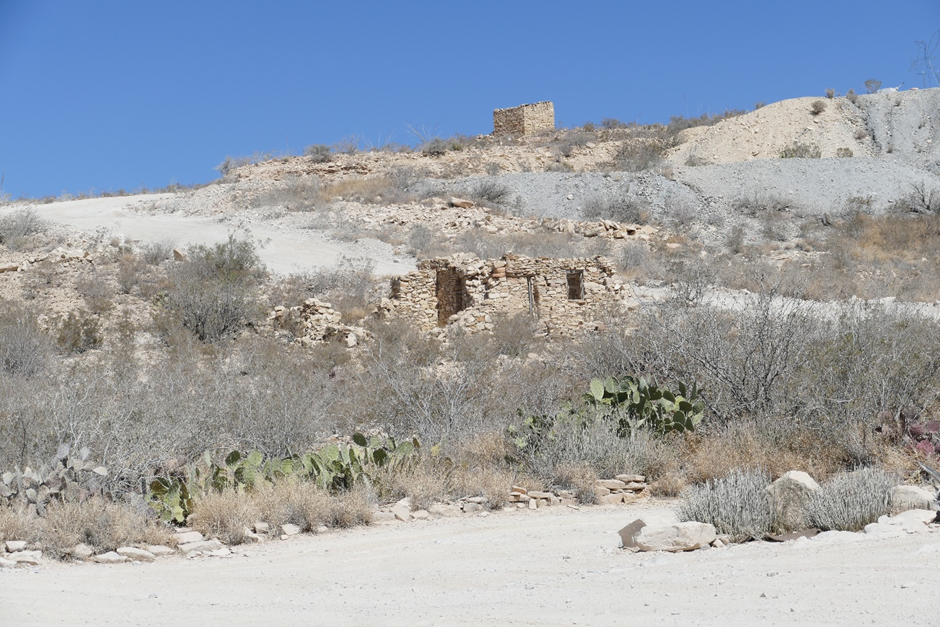Overnight stops (in date order): Pensacola West; New Orleans (x2); Lafayette; Houston; San Antonio (x3); Fredericksburg (x2); Seminole Canyon State Park (x2); Stillwell Store; Big Bend National Park (x2); Presidio; Van Horn

We continued west on Interstate 10; through the narrow coastal strips of Alabama and Mississippi.

We stopped for two nights at an inner-city RV park in New Orleans – complete with search lights, razor wire-topped fence and a guard dog.

Between torrential showers,

we visited the sights of the French quarter,




and ended with early evening jazz.


Danielle felt at home in the Acadian Village open-air museum at Lafayette.

The Acadians (or ‘Cajuns’ to the Americans) were French colonists expelled by the British from New France (now parts of Quebec and the maritime provinces of Canada) in the mid-18th century. Some settled in Louisiana and intermingled with the local Creole people.



We crossed another State border into Texas


and camped by a lake outside Houston; in the company of a great-tailed grackle

and an equally noisy, but more elusive, downy woodpecker.

The nearby Space Center Houston has a replica space shuttle atop a Boeing 747,



and in-depth displays about life in space

– it couldn’t have been so easy getting out of that suit if you were in a hurry.

The Saturn V moon rocket (one of three remaining) is the most impressive exhibit.

The first Saturn V was launched 55 years ago. The statistics are daunting – 60 feet taller than the Statue of Liberty, weighing 2,600 tons when fully fuelled (with more than 2 Million litres of kerosene and liquid oxygen) and with an estimated fuel efficiency of 5 inches per gallon.

Changing gear, we spent three nights in San Antonio – famous for the walking path beside the eponymous river.





Spring was in the air.




We didn’t forget The Alamo,

nor the Mission San Jose,

nor the San Fernando Cathedral

(which, according to American mythology, houses the remains of Davy Crockett);

All of which were built by the Spanish in the 18th Century.
Going back further, the Museum of Art has a small but high quality section on pre-Columbian Mesoamerica.

We stopped at a dusty and windy RV Park at Fredericksburg,


to spend a day in the town, that was founded by German immigrants in the mid-19th Century.


Once a major producer of peaches, wine is now the main local product. The two most famous sons of Fredericksburg are Admiral Chester William Nimitz, Fleet Admiral of the United States Navy – and commander of the Pacific Fleet in the second world war, and John Mulkey Owens Jr.

who – presumably in the absence of anything better to do – compiled the world’s largest collection of barbed wire.

West of Fredericksburg, we were deep into southern Texas ranch country.

Settlements were few and far between.

I don’t know whether it really was ‘the best in Texas’, but the jerky (beef, elk, boar and venison) was certainly good.

Two nights at Seminole Canyon State Park


gave us the chance to experience the Chihuahuan Desert.







The Canyon

opens into the Rio Grande; with Mexico on the other side.

People have lived in the area around Seminole Canyon for thousands of years. The walls of caves along the Canyon walls are decorated with paintings; some of which are at least as old as the Egyptian Pyramids.




We returned to the Rio Grande at Big Bend National Park.


Close-up, the river was not looking so Grande – about the width and depth of the Avon at Salisbury;

you could wade across it to join the gauchos in Mexico.


Upstream of the Rio Grande, much of the river’s water is diverted for agriculture. Also, it had not rained in the region for two months.

Otherwise, the Park is magnificent; with wonderful views; west to the Chisos Mountains,

and east to the Sierra del Carmen mountain range in Mexico.

The colours were best at sunset.



A rocky, three-mile hike down-river from the campground,


ends with a soak in the Boquillas Hot Springs. The water is captured in the foundations of a ruined bathhouse built as part of a spa resort in the early 20th Century.

There are few signs of those who lived in the area for thousands of years before the Spanish conquest. In places, there are mortar holes that people cut in the rocks to use for grinding and preparing food.

Although March is the middle of the dry season,

the ocotillos had crimson flowers at their tips

and the first blue bonnets, the Texas State flower, were in bloom.

Here are Danielle’s pictures of the beautiful, dormant little trees along the desert road.



Most of the desert animals are nocturnal – the exceptions are birds


The second is a roadrunner; capable of chasing down and killing a rattlesnake.
After leaving the National Park, we stopped for lunch at Terlingua; a ghost town that was once the site of a mine.

The town is being revived by a mix of bohemians and artists.

After a night at the border town of Presidio, we visited Fort Davis, a frontier military post during the ‘Indian wars’ of the second half of the 19th Century.



The fort’s principal role was to defend the road between San Antonio and El Paso from attacks by Apaches and Comanches; whose lands had been taken by American settlers.

We followed the route of the old road, north-east through the Davis Mountains

On the higher ground, we passed through woodland with large trees for the first time in many days.

On our last night in Texas, we ate nopales – the chopped pads of the prickly pear cactus.



Great read and photo’s as ever, bringing back some good memories for me (and one bad – my worst ever hangover, in ‘N’awlins’!). You both look fine so it’s doing you good and we look forward to seeing and reading more. Stay safe, Paul and Maralyn
Now, that’s what I call a Rocket!
Xxx
Don’t forget to visit San Antonio. You are a good photographer Paul.
Back home in Canada for me.
What a great trip!
Quite an impressive statistic for the Saturn-5 inches to the gallon. Just as well it is cheaper in USA.
Pleased you survived the Alamo.
Safe onward journey.
Best wishes, Simon
Hello Paul and Danielle Thank you for our “starfish” was nice to hear from you both. You are visiting so many interesting places rich in French and Spanish culture. We look forward to hearing more about it. The Houston space centre got our attention as we love anything to do with space or astronomy. Take care love Joanna & Paul xx
Hi Paul and Danielle. Thanks for the postcard Danielle. The space centre looks fascinating. And lovely photos as usual.
Love
Carole
Le soleil est toujours présent. Vous êtes chanceux!
Bonne route!
I am so enjoying following your trip – I never think of the USA as full of flora and fauna, but it is, of course. A roadrunner, really!! And I love seeing Danielle’s interpretation of the trees in the desert, and all the sunshine in your photos (it is a particularly cold, wet and windy day here in SW France). Now I am going to look at the next instalment of your blog, it is already there…….
Best wishes from Anna (and Hugh)
WhenI looked the photographs of the long views I found myself aut0matically pausing and taking a slow deep breath -vicarious viewing! Thank you Paul, your photographs are a delight to ponder. The red flowers and berries are a wonderful contrast- life – against the arid desert, and those mortar holes, how fascinating; they remind me of pictures of the surface of the moon.
Danielle it was very brave of you to sit with that Brave at Fort Davis, and you look so perfectly relaxed.
I always love to see your work. The first image looked almost set in moonlight, a subtle golden glow . Were the swirling oval lines paper marks? And their colours, again so gentle.The last painting – the Red Cross on an angle created an energising impact for me.
The second picture reminded me of your oriental paintings, so delicate, uplifting, enchanting. It makes me happy. Thank you.
Seeing a picture of a gaucho reminds me of a limerick
There once was a gaucho named Bruno
Who once said ‘there is something I do know,
I will have to tell you the rest when I see you
Great pictures-thanks for sharing them with us